Raised Dog Bowls - All you need to know
A raised dog bowl is a great idea for most dogs, even small dogs, but are particularly beneficial to medium and larger dogs. Why? Straining down to reach your food is no fun for anyone and it can also have digestive and physical implications in the form of neck and even back strain.
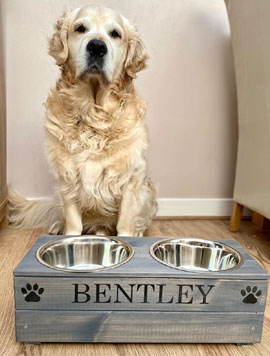
A dog bowl raised just slightly off the ground will help your dog reach their food and water without having to strain or perform their eating and drinking at an uncomfortable angle.
Having said that, going too high can cause issues too. A bowl or feeder that is too high for your dog can cause just as much strain, in the other direction, and could also exacerbate issues like bloat. So the key is to get it just right. We will talk more about raised bowl height and also bloat later plus how to measure your dog for a raised dog feeder.
Does my dog need a raised food bowl?
Are raised bowls better for dogs? Look at your dog as they eat their next meal and consider their posture. Are they having to reach down? If your dog is reaching down to their food or water, a raised bowl will be more comfortable for them. This is true for all dogs but especially for dogs who are old or who have mobility issues, pain, arthritis and so on.
An elevated dog bowl can help ease the strain on your dog's shoulders, neck and back by providing a more comfortable eating and drinking position.
Benefits of a raised dog bowl
We have already discussed the benefits for your dog's posture but you will also find that an elevated feeder or bowl will be more likely to stay in place as your dog eats (no more travelling food bowls) and will be less likely to get kicked around and spilt everywhere. Less mess is always a bonus. And if you have a pup who loves to play with their food and water bowl, dog raised bowls could certainly help.
From wooden to ceramic bowls or travel feeders in durable plastics, there is sure to be one to suit your needs.
How high should a raised dog feeder be?
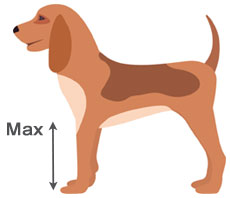
An elevated feeder or dog bowl stand should be just the right height for your dog to eat or drink with their head looking down and their neck also in a downwards position. The dog should be able to stand relatively straight but still with some stooping to reach their head and neck down into the bowl, rather than being too upright.
The best height is quite precise to your dog so I don't recommend following any general rules of thumb when it comes to feeder heights. Having a measure so a raised bowl is perfect for your dog is always best, unless you are going quite low and can be sure their head and neck won't be raised. If in doubt, go low.
To decide on the perfect elevated dog bowl height for your dog, hold a bowl up while they are eating in a comfortable position. See where that comes to and choose the feeder height accordingly. Don't forget to also take the bowl depth into account.
As a general rule, measure your dog from the floor to where their legs meet their body and don't get a raised bowl or feeder that is taller than that. That is the maximum height it should be.
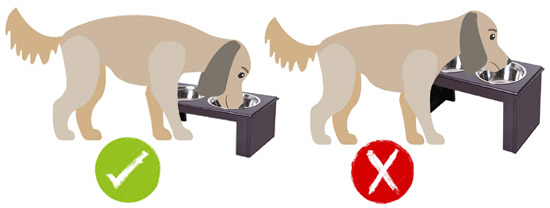
Best raised dog bowls
There are so many to choose from, so shop around for one in your style and budget. If you go for a bowl stand then make sure it doesn't wobble about as your dog eats. That is going to be very off putting for your pooch. Generally a sturdy four-legged square structure is less wobbly than ones on poles or single stands.
A feeder or stand with removable stainless steel bowls or even ceramic ones is a great idea as this will make them easy to clean.
Some dog bowl stands are adjustable which is great for getting the height just right. There are also some feeders that can be wall mounted but be sure doggie is fully grown first or you will have a wall peppered with drill holes, lol.
The most important thing is to firstly decide on the height you need it to be and then check out the heights of the ones you like. View all our Raised Dog Bowls.
Benefits of elevated water bowls
What are the benefits of a raised dog water bowl? Not having to reach so far down to the ground will help with drinking. Swallowing is much easier when your dog is not fighting gravity. Single raised dog bowls are great for meal times but if you are going for elevated drinking too, consider a double dog bowl that can be used for food and water. Many raised feeders come in single or double options and some even come with triple bowls for larger broods. But the same rules apply to raised water bowls. Lower is better. Don't go too high.
Raised dog bowls for large breeds
If you have a large or deep chested breed, bloat is a potential issue. If you want to find out more visit Dog Bloat and Gastric Torsion.
Traditionally, raised feeders had been suggested to help prevent bloat. More recently there have been suggestions that this could actually make things worse. The general consensus of opinion is somewhere in-between. A raised feeder can be great for improved posture and comfort but don't bank on it stopping your dog from getting bloat. Bloat is a complicated issue with many factors.
Again, our advice would be to go a little bit higher off the ground but keep it low enough that your dog is still looking down with their head and neck and some of the upper part of their body. It is better to err on the side of caution. Definitely don't go too high with a dog whose size, breed or history puts them at risk of bloat. A small rise off the ground is best.
This informative article How an Elevated Dog Feeder Could Lead to Bloat by Vetinfo says "More research needs to be done on GDV [bloat] in relation to using elevated feeders. It is uncertain whether anything we do such as changing the amount of exercise, using elevated feeders, or speed of eating will decrease or increase the rate of bloat."
The issue of raised feeding bowls is still one of contention. Research and theories are ongoing regarding whether raised dog bowls and feeders really help bloat or may actually aggravate the condition.
Do vets recommend elevated dog bowls?
So what do vets say about elevated dog bowls? In 2015 we asked vet Alison Logan what her view is on the issue of dog bloat and raised feeders:
"Bloat is one of many conditions where advice varies with time, reflecting the results of ongoing research. Yes, raising the feeding bowl was advised at one time and current thinking is that it is best to feed from the ground once more. That advice may well change in the future, if it has not already. It may be a matter of by how much the feeding bowl is raised, so perhaps feeding off the lowest back-door step rather than raising it by twelve inches, for example? There are so many factors potentially at play in the development of bloat that the height of the feeding bowl may be insignificant or a relatively minor feature in comparison with another factor, which may not have even been identified yet."
Hopefully this has helped but as always, any questions just ask.
By Jenny Prevel
© D for Dog www.dfordog.co.uk
This article belongs strictly to D for Dog and we do not authorise the copying of all or any part of it.

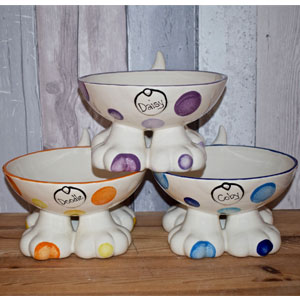
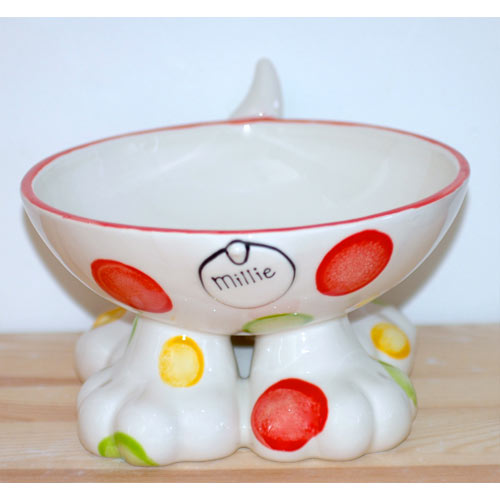
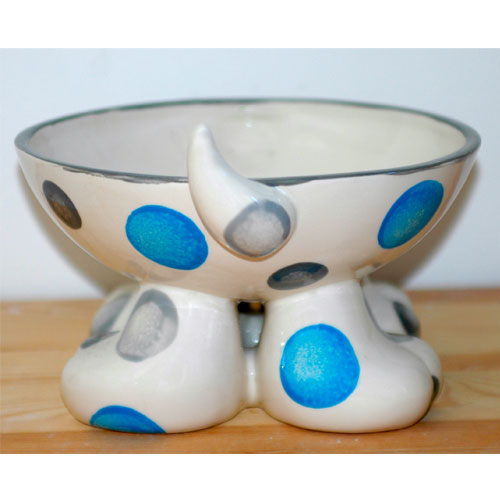

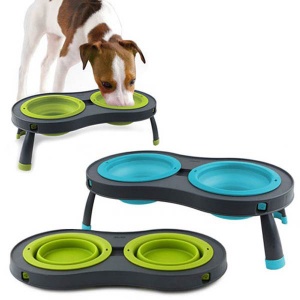

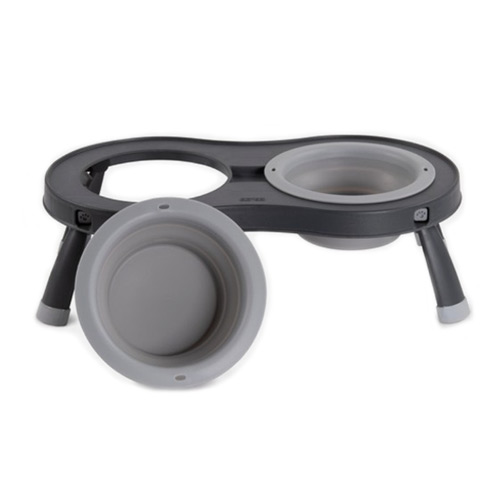
.jpg)
.jpg)

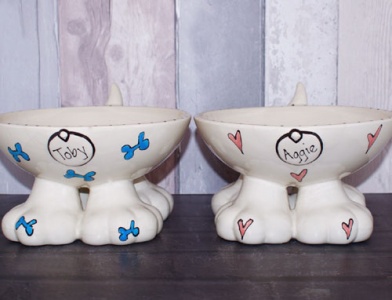
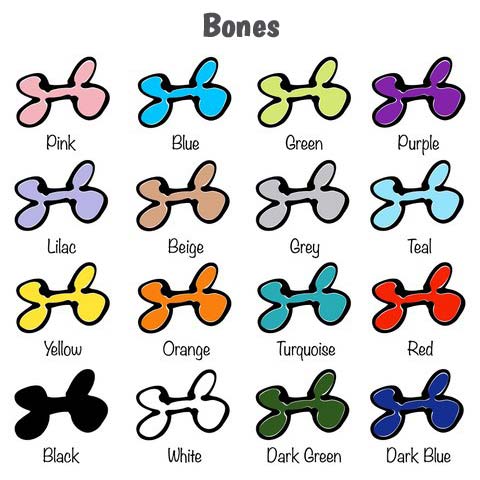

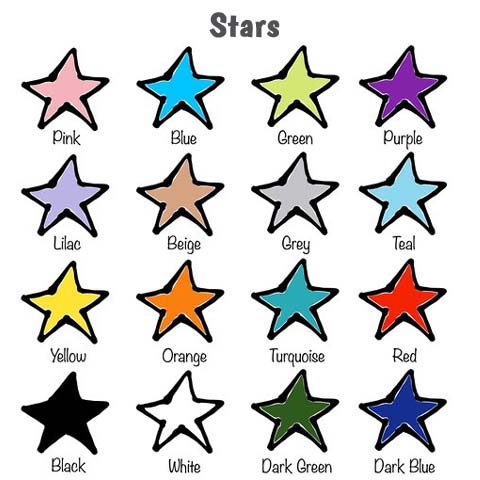
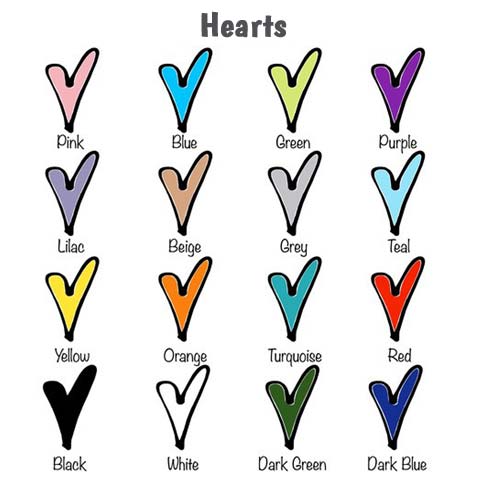
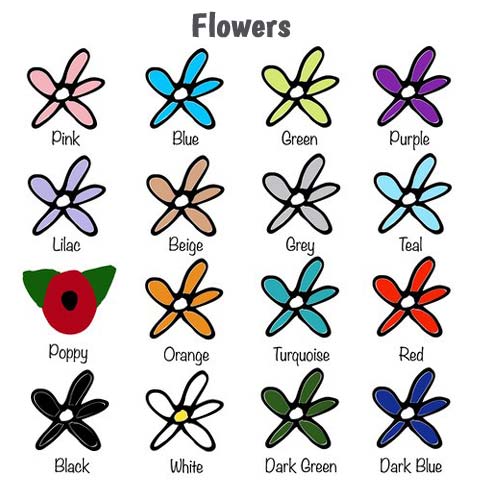
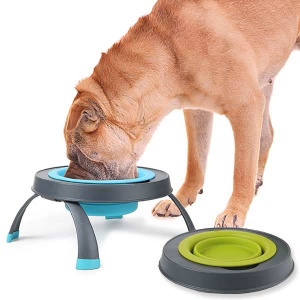

.jpg)
.jpg)
We have had a raised double bowl feeder /water bowl for a few years now our Bearded Collie " Teddy " who is 10 approaching 11 years old and has had arthritis in his paw from a puupy hood injury , now can take the raised feeder or leave it varies from day to day and show no real benefits or preferences .